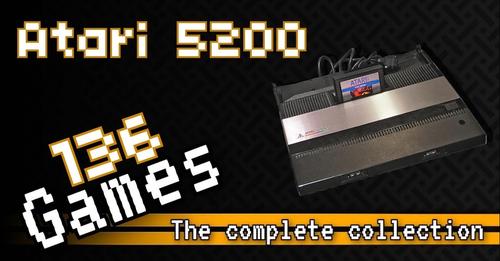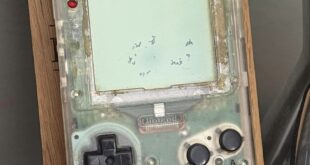Enjoy our comprehensive retrospective as we showcase each and every one of the classic games developed for the Atari 5200.
Atari 5200: A Retrospective on the SuperSystem’s Ambitions and Challenges
The Atari 5200, also known as the Atari 5200 SuperSystem, is a home video game console that was introduced in 1982 as the higher-end counterpart to the wildly successful Atari 2600. Intended to compete with the Intellivision and upcoming systems, the 5200 was designed to address the evolving market. Despite its technological advancements, the system faced several challenges and ultimately had a short lifespan. Below we explore the specifications, the history, and provide a system review of the Atari 5200.
Specifications:
– CPU: 1.79 MHz Custom MOS 6502C
– RAM: 16 KB
– ROM: 32 KB
– Graphics: Custom Graphics Processor capable of displaying up to 256 colors
– Sound: 4-channel sound via the POKEY chip, also responsible for I/O operations
– Controller: Analog joysticks with a numeric keypad and start, pause, and reset buttons
– Storage: Cartridge-based, with an average game size of 16-32 KB
– Output: RF video output, composite video in later models
History:
The Atari 5200 was released in the wake of the Atari 2600’s massive success, and it was intended to be the next-generation leap for the company. Based on the architecture of the less well-known Atari 400/800 computers, the 5200 was more powerful than its predecessor and aimed to provide an authentic arcade experience at home.
However, the timing of its launch coincided with the early signs of an oversaturated market, which would eventually lead to the video game crash of 1983. Furthermore, the 5200’s release was closely followed by the ColecoVision, which offered similar capabilities and a Donkey Kong cartridge, significantly swaying the market in its favor.
System Review:
Design and Build: The Atari 5200’s design was a significant departure from the 2600, with a modern, sleek look and a compartment to store controllers. However, its size was considered bulky compared to other consoles of the time.
Game Library: The 5200’s library included many arcade hits such as “Pac-Man” and “Galaxian,” which were graphically superior to those on the 2600. However, the library was limited, with less than 100 titles released. The lack of backward compatibility with the 2600 was also a significant drawback, as it forced consumers to start their game collections from scratch.
Graphics and Sound: With improved graphics and sound capabilities over the 2600, the 5200 could deliver a more immersive and visually appealing gaming experience. Games were brighter, more colorful, and featured more detailed sprites.
Controller: One of the most criticized aspects of the 5200 was its controller. The analog stick lacked centering, making precise control difficult, and the keypad was seen as unnecessary by many. Reliability was also an issue, with controllers known to fail.
Market Performance: The Atari 5200 did not perform as well as expected. Its higher price point, the inconvenience of non-backward compatibility, and the infamous reliability issues of its controllers contributed to its struggles in the market.
Legacy: Despite its commercial failure, the Atari 5200 is remembered for its attempt to push the boundaries of home gaming. It showcased what was technologically possible and set the stage for future developments in the industry.
Conclusion:
The Atari 5200 is a fascinating study in the evolution of video game consoles. While its ambition to deliver an advanced gaming experience is commendable, a combination of market timing, design flaws, and stiff competition led to its downfall. For collectors and retro gaming enthusiasts, the 5200 offers a glimpse into an era of transition in the video game industry, serving as a reminder of both the potential and the pitfalls of innovation in gaming technology.
This post has been captured from our very own retro gaming group over at FB
 Retro-Replay.com Retro gaming reviews, news, emulation, geek stuff and more!
Retro-Replay.com Retro gaming reviews, news, emulation, geek stuff and more!




